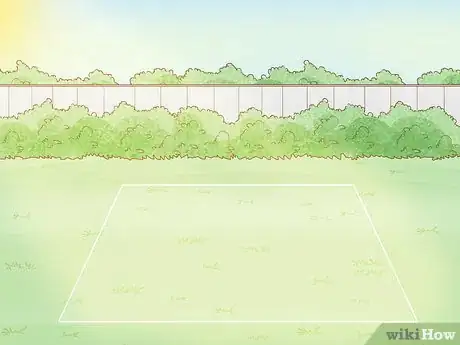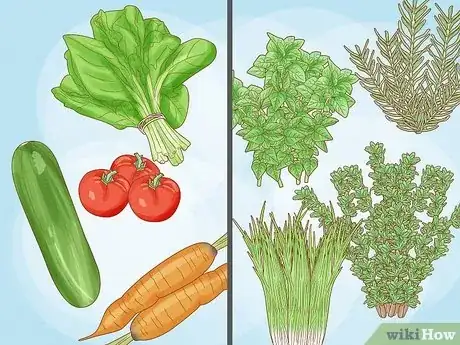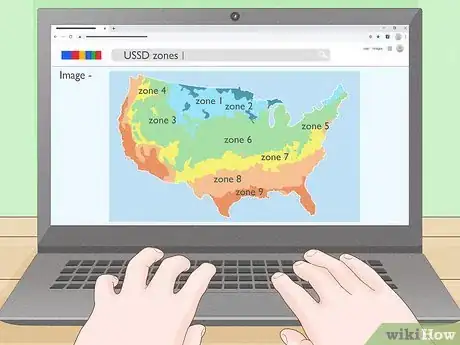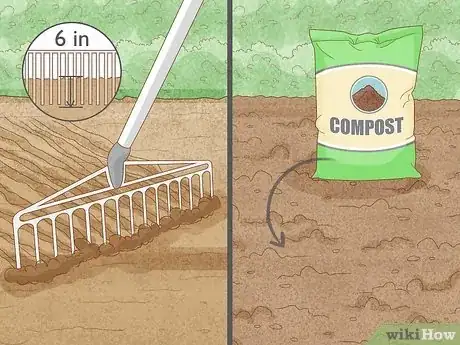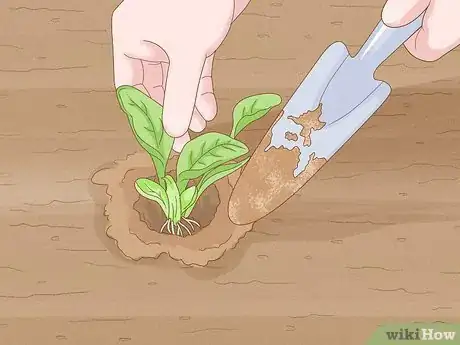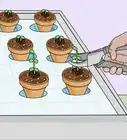This article was co-authored by Steve Masley and by wikiHow staff writer, Jessica Gibson. Steve Masley has been designing and maintaining organic vegetable gardens in the San Francisco Bay Area for over 30 years. He is an Organic Gardening Consultant and Founder of Grow-It-Organically, a website that teaches clients and students the ins and outs of organic vegetable gardening. In 2007 and 2008, Steve taught the Local Sustainable Agriculture Field Practicum at Stanford University.
There are 11 references cited in this article, which can be found at the bottom of the page.
wikiHow marks an article as reader-approved once it receives enough positive feedback. In this case, 94% of readers who voted found the article helpful, earning it our reader-approved status.
This article has been viewed 180,182 times.
Having a garden at home adds color and life to your yard and also rewards you with fresh fruits, veggies, and herbs. Fortunately, you don't need a lot to get started. If you have an idea of what you'd like to grow, you're already on the right track! We'll cover what you need to start a successful garden and give you the step-by-step guide to getting your plants in the ground.
Steps
Expert Q&A
-
QuestionWhat month should you start a garden?
 Steve MasleySteve Masley has been designing and maintaining organic vegetable gardens in the San Francisco Bay Area for over 30 years. He is an Organic Gardening Consultant and Founder of Grow-It-Organically, a website that teaches clients and students the ins and outs of organic vegetable gardening. In 2007 and 2008, Steve taught the Local Sustainable Agriculture Field Practicum at Stanford University.
Steve MasleySteve Masley has been designing and maintaining organic vegetable gardens in the San Francisco Bay Area for over 30 years. He is an Organic Gardening Consultant and Founder of Grow-It-Organically, a website that teaches clients and students the ins and outs of organic vegetable gardening. In 2007 and 2008, Steve taught the Local Sustainable Agriculture Field Practicum at Stanford University.
Home & Garden Specialist Take timing into account. Planting dates vary with climate zones. If you live in a region with mild winters and hot summers, for example, you'll be able to plant earlier in the year than you would if you lived in a region with cold winters and shorter summers.
Take timing into account. Planting dates vary with climate zones. If you live in a region with mild winters and hot summers, for example, you'll be able to plant earlier in the year than you would if you lived in a region with cold winters and shorter summers. -
QuestionIs there any kind of DIY fertilizer?
 Community AnswerYou can take your food scraps and start a compost pile in a large container, it will be great fertilizer. If you need something more quickly, ashes from burnt wood are high in phosphorous, and urine is high in nitrogen.
Community AnswerYou can take your food scraps and start a compost pile in a large container, it will be great fertilizer. If you need something more quickly, ashes from burnt wood are high in phosphorous, and urine is high in nitrogen. -
QuestionHow do I keep my dog out of my garden?
 Community AnswerThe best way to keep your dog out of your garden is to mount a fence that's too tall for your dog to jump over. You could also tie your dog up outside using a leash that's an appropriate length to keep them from reaching your garden.
Community AnswerThe best way to keep your dog out of your garden is to mount a fence that's too tall for your dog to jump over. You could also tie your dog up outside using a leash that's an appropriate length to keep them from reaching your garden.
Things You’ll Need
- Gardening gloves
- Small spade
- Watering can or hose
- Shovel
- Rake
- String and stakes, optional
- Fertilizer or compost, optional
- Fencing supplies, optional
- Soil test kit, optional
References
- ↑ https://www.purdue.edu/hla/sites/yardandgarden/advice-for-first-time-gardeners-start-small/
- ↑ https://extension.umd.edu/resource/how-start-vegetable-garden
- ↑ https://www.purdue.edu/hla/sites/yardandgarden/advice-for-first-time-gardeners-start-small/
- ↑ https://hortnews.extension.iastate.edu/1994/4-6-1994/ph.html
- ↑ https://extension.umd.edu/resource/soil-testing-and-soil-testing-labs
- ↑ https://www.finegardening.com/article/8-reasons-to-plant-vegetable-starts-instead-of-seeds
- ↑ https://garden.org/nga/zipzone
- ↑ https://extension.umn.edu/planting-and-growing-guides/companion-planting-home-gardens
- ↑ https://extension.unh.edu/resource/growing-vegetables-when-plant-your-vegetable-garden-fact-sheet
- ↑ https://www.purdue.edu/hla/sites/yardandgarden/advice-for-first-time-gardeners-start-small/
- ↑ Steve Masley. Home & Garden Specialist. Expert Interview. 20 March 2020.
- ↑ https://extension.umn.edu/lawncare/what-do-lawn-clippings
- ↑ Steve Masley. Home & Garden Specialist. Expert Interview. 20 March 2020.
- ↑ https://extension.umn.edu/water-wisely-start-your-own-backyard/watering-vegetable-garden#when-to-water-869310
About This Article
To start a garden, check online to see what plants thrive in your region, then decide what kinds of plants you want to grow, such as vegetables, flowers, herbs, or a combination. Next, choose a spot in your yard where your chosen plants will get the sunlight and drainage they need to survive. Till the soil and use a testing kit to determine the soil's pH and nutrient levels, then amend the soil as needed. Lastly, plant your seeds or seedlings and provide adequate water and fertilizer as they grow! For tips on designing your garden, read on!
